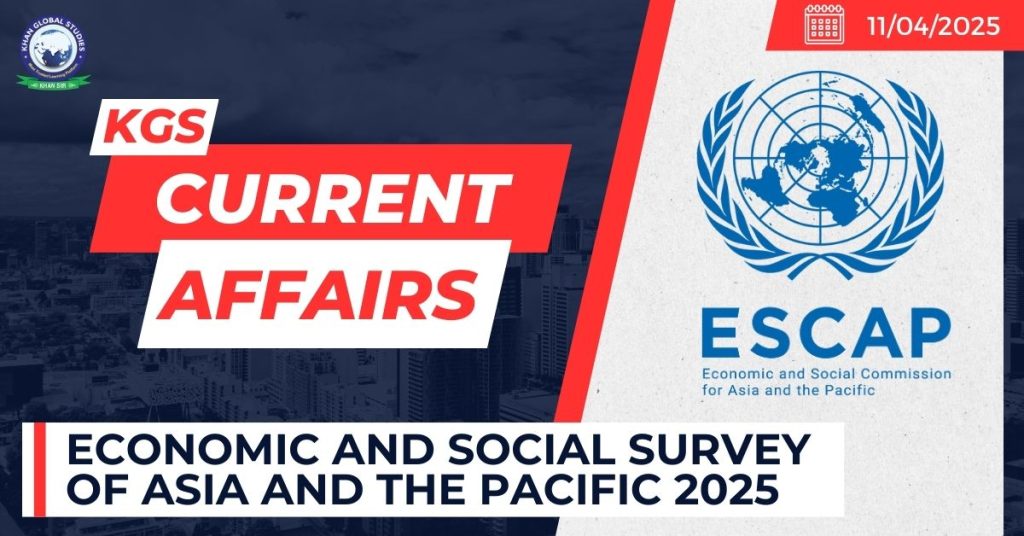Context:
A new United Nations report highlighted that climate shocks could result in annual economic losses of at least 6 per cent in one-third of Asia-Pacific countries, underscoring the region’s significant vulnerability to climate change.
More on the News

- The report, titled Economic and Social Survey of Asia and the Pacific 2025: Understanding the Macroeconomic Implications of Climate Change, was published by the UN Economic and Social Commission for Asia and the Pacific (ESCAP) and launched on April 8, 2025.
- It highlights how many developing economies in the region are struggling to manage the macroeconomic repercussions of climate change and the transition to a green economy.
Key highlights of the report
- The Asia-Pacific region contributed 60 per cent of global economic growth in 2024, several of its countries remain ill-prepared for climate shocks.
- High-Risk Countries Identified: Among the 30 countries analyzed, 11 were flagged as especially vulnerable to macroeconomics risk from climate change, including Afghanistan, Cambodia, Myanmar, Nepal, the Islamic Republic of Iran, Kazakhstan, the Lao People’s Democratic Republic, Mongolia, Tajikistan, Uzbekistan and Vietnam.
Average Annual Losses (AAL):
- The regional average AAL is approximately 4.8% of the GDP.
- Cambodia’s AAl is the highest at nearly 11% of GDP, driven by extreme floods and droughts affecting agricultural output.
- Fiji, Myanmar, and Pakistan have AAL of at least 7% of GDP, attributed largely to fragile infrastructure that amplifies the effects of climate disasters.
- Vietnam’s risk is compounded by rapid urbanization and land-use changes, which increase exposure to coastal flooding and storms.
Primary Drivers of Losses: Intensifying natural hazards such as floods, droughts, tropical cyclones, and heatwaves, combined with Infrastructure and exposure in key sectors like agriculture, energy and manufacturing.
Key Recommendation of the Report

- The report recommends that governments take proactive steps to help economies shift towards more productive and higher-income sectors.
- It encourages the region to make use of its strengths in green industries and sustainable value chains as new engines of economic growth.
- To achieve long-term prosperity, the survey highlights the need for inclusive regional economic cooperation.
- The cooperation should address the development needs of both developed and developing countries in the Asia-Pacific region.

